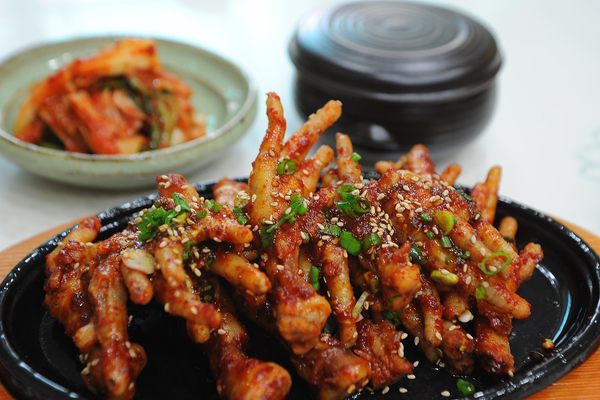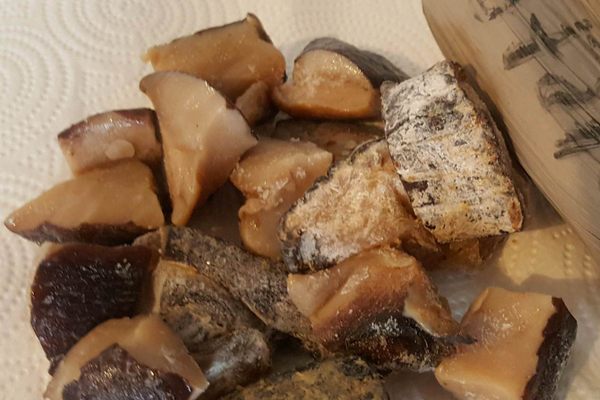Meats & Animal Products
Hongeo
Fermented skate smells like it urinates through its skin—which it does.
Like Icelandic hákarl, Korean hongeo—or fermented skate—excretes uric acid through its skin. South Koreans capitalize on this pungent, natural preservative by serving the creature as aged sashimi. Accompanied by boiled pork belly and kimchi, hongeo becomes part of a culinary trinity known as samhap.
Mokpo, a city at the southwestern tip of the Korean peninsula, is especially renowned for hongeo. Locals consider the dish an essential part the region’s culture and economy. How this sharp, ammonia-heavy dish became part of the culinary landscape traces back to the 14th century, when inland residents discovered that a fisherman’s supply of skate could travel from the coast without expiring. Why? The skate had fermented in its own urine.
Though it gradually became known as a dish for the royal elite and men wanting to boost their virility (some claim it has aphrodisiac properties, but these are unconfirmed), most South Koreans still turn up, and plug, their noses at the thought of eating hongeo. To properly eat a piece, “pick up the hongeo, breathe through your mouth, then out your nose,” says Sue Ahn, a Seoul-based food journalist. “After that, you eat it.” Fans attest to the idea that, when it comes to hongeo, fourth time’s a charm. The brave eater will discover an odor reminiscent of an unclean bathroom emanating from the chewy, cartilage-heavy meat—which is often described as “hard-to-swallow.”
Written By
 rachelrummel
rachelrummel
Sources
- www.npr.org/sections/thesalt/2016/02/08/464713766/hold-your-nose-and-take-a-bite-the-odd-appeal-of-a-south-korean-fish-dish
- zenkimchi.com/korean-food-101/hongeo-%ED%99%8D%EC%96%B4-the-hardest-thing-to-swallow-in-korea/
- www.nytimes.com/2014/06/15/world/asia/hongeo-south-koreas-smelliest-food.html
- io9.gizmodo.com/this-south-korean-delicacy-tastes-like-a-urinal-cause-1592944136
The Atlas Obscura Podcast is Back!

















